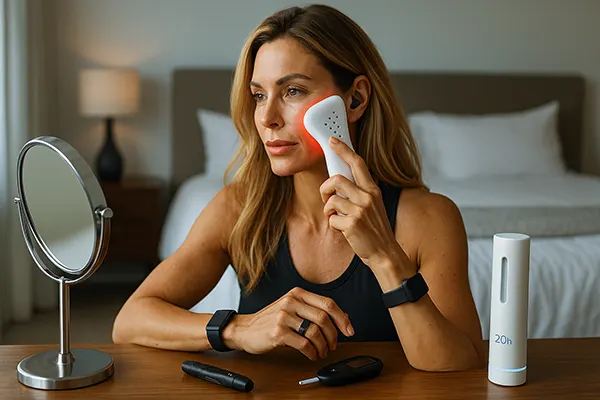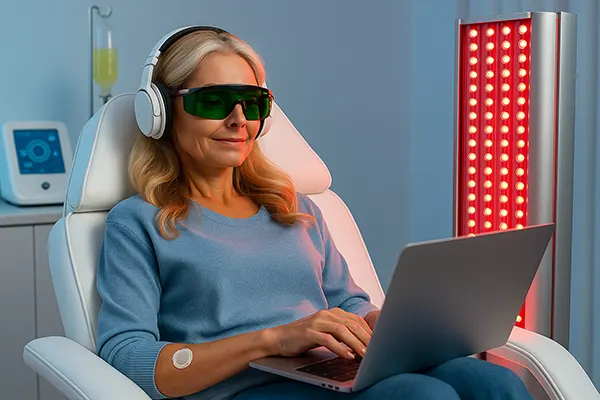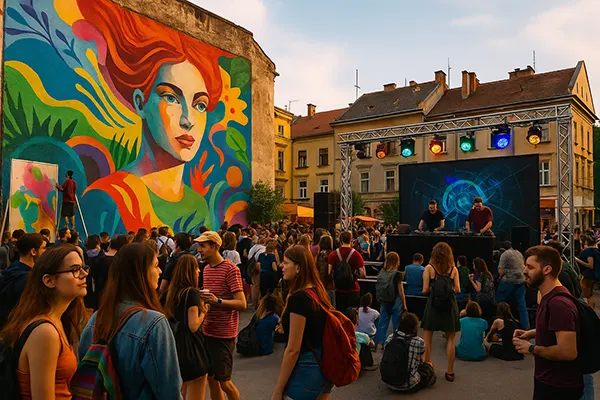
How Celebrities Prepare for Ageing: Biohacking and Emerging Technologies
Ageing is no longer viewed as an inevitable decline in the world of showbiz. Increasingly, celebrities are turning to cutting-edge technologies and scientific approaches to slow down, or even reverse, the visible signs of time. From Silicon Valley icons to Hollywood stars, biohacking and anti-ageing innovations have taken a firm place in the daily routines of those who live in the spotlight.
High-Profile Celebrities Embracing Biohacking
Among the leading proponents of biohacking is Bryan Johnson, tech entrepreneur and founder of Blueprint, who spends millions annually tracking his biomarkers and pursuing cellular regeneration. His routine includes gene therapy, intermittent fasting, sleep optimisation, and a cocktail of supplements aimed at resetting his biological age.
Actor and musician Jared Leto has long been vocal about his lifestyle choices, which include a plant-based diet, strategic cold exposure, and regular meditation. His youthful appearance well into his 50s often sparks public speculation, but it’s largely a result of meticulous self-discipline and modern wellness science.
Meta’s CEO Mark Zuckerberg has also joined the ranks of tech elites investing in longevity. Through Chan Zuckerberg Biohub, he supports research into reversing age-related diseases, targeting cellular rejuvenation and regenerative medicine—an area overlapping with his personal health interests.
Scientific Principles Behind Their Strategies
These celebrities rely on personalised diagnostics to monitor blood panels, hormone levels, mitochondrial function, and sleep patterns. The idea is to preemptively identify weaknesses before they manifest as disease. Many also work with elite clinics such as Human Longevity Inc. or Function Health, which combine AI and genomics to tailor individual anti-ageing protocols.
Some opt for more invasive methods like plasma transfusions (also known as “young blood therapy”) or stem cell injections, aiming to rejuvenate tissues. Though still controversial, these practices are gaining traction among early adopters who can afford the experimental procedures.
Additionally, wearable technology plays a crucial role—devices such as the Oura Ring, Whoop Strap, and continuous glucose monitors allow real-time tracking of key biomarkers, helping users optimise energy, mood, and recovery time.
Breakthrough Technologies Fueling the Anti-Ageing Trend
One of the most promising compounds in the fight against cellular ageing is NAD+ (Nicotinamide Adenine Dinucleotide). Supplementation with NAD+ precursors like NMN and NR is believed to enhance mitochondrial function and DNA repair, thereby supporting longevity. Notably, studies by Harvard’s David Sinclair suggest NAD+ levels are directly linked to cellular youthfulness.
Another avenue attracting interest is senolytics—drugs that selectively eliminate senescent cells, which are thought to accelerate ageing and chronic inflammation. Companies like Unity Biotechnology are developing such therapies, with clinical trials underway in 2025.
Gene therapy is also making headlines. While not yet mainstream, CRISPR-based treatments are being explored to repair telomeres or address age-related genetic mutations. Experimental procedures in longevity labs across California, Israel, and South Korea are progressing rapidly, and a few celebrity investors have reportedly undergone private pilot treatments.
Integrating Technology into Daily Life
Some of the newest longevity-focused start-ups offer at-home kits to test and optimise everything from gut microbiome diversity to brainwave activity. With the increasing availability of direct-to-consumer services, celebrities no longer need to rely exclusively on clinics.
Wearables now come integrated with AI-powered assistants that not only collect data but provide real-time recommendations. Whether it’s adjusting light exposure to optimise circadian rhythm or changing macronutrient intake, decisions are increasingly guided by smart analytics.
VR and neurostimulation are also becoming part of the toolkit. Tools like transcranial direct current stimulation (tDCS) are used by some public figures to improve focus, memory, and emotional regulation—core components of healthy ageing.

Ethical Questions Surrounding Celebrity Longevity
Despite the fascination with high-tech rejuvenation, not everyone sees these developments in a positive light. There are concerns that only the ultra-rich can access these technologies, potentially widening the longevity gap between economic classes. Critics argue that these advancements, while exciting, reinforce inequality in healthcare outcomes.
There’s also the issue of authenticity and societal pressure. Some fear that the publicised pursuit of ‘immortality’ among celebrities contributes to unrealistic expectations of beauty and health, especially among young people. When influencers present radical interventions as “normal”, it can distort public perception of ageing.
Additionally, long-term risks of unregulated therapies—such as gene editing or experimental injections—remain unknown. Without sufficient clinical evidence and regulation, individuals may face unforeseen health consequences, raising complex legal and medical questions.
Future Outlook and the Role of Regulation
Governments and health authorities are beginning to catch up. The FDA and EMA have both initiated consultations on how to oversee longevity-enhancing treatments. There is growing consensus that ethical guidelines must evolve alongside the science to ensure safety and fairness.
Medical associations also urge celebrities to disclose the experimental nature of many therapies they promote. Transparency, they argue, can help audiences make informed choices and avoid self-experimentation without professional oversight.
Nonetheless, as technology matures and costs drop, some of these innovations may eventually become part of mainstream preventive medicine. What celebrities are pioneering today could shape the public health landscape of tomorrow.






